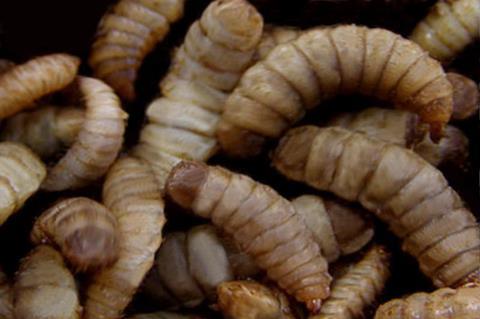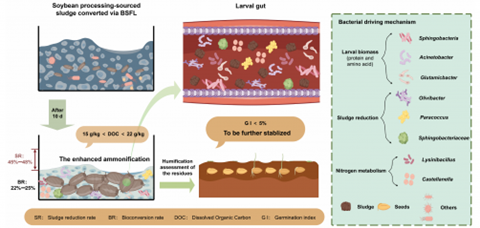Researchers from Peking University Shenzhen Graduate School, et al. have conducted a study entitled “Valorization of soybean-processing wastewater sludge via black soldier fly larvae: insights into the performance and bacterial community dynamics”. This study was published in Frontiers of Environmental Science & Engineering, Volume 19, Issue 5.

Efficient and environmentally sound treatment of soybean processing wastewater sludge is importance for industrial sustainability. Bioconversion by black soldier fly larvae (BSFL) has been extensively applied in biowaste recycling because of its efficacy and production of high-value outputs.
READ MORE: Scientists replace fishmeal in aquaculture with microbial protein from soybean processing wastewater
READ MORE: UK funds £15.6 million boost for low-emission food production systems
However, the performance and underlying bacterial drivers of the BSFL-mediated sludge bioconversion require further investigation. This study investigated the larval bioconversion of the sludge, emphasizing waste reduction, larval quality, and the relationship between these aspects and bacterial communities.
The inoculation with BSFL remarkably enhanced the reduction in the initial substrate (i.e., sludge plus wheat bran as the bulking material). This intervention also yielded a high larval bioconversion rate of approximately 22% along with a higher larval crude protein content ranging from 45%–48% and a 17 amino acid to protein ratio of 86%–92%.
Higher dissolved organic carbon concentrations (15–22 g/kg), coupled with lower germination indices (< 5%), indicated that the residues retained biological instability after the bioconversion and required further composting. The potential risk of heavy metal pollution from mature larvae may not be a concern when used as aquaculture feed.

The larval gut exhibited a higher bacterial diversity than the residues. Ammonium concentration increased with wheat bran and was positively correlated with the genera Lysinibacillus and Castellanella. Diverse gut bacteria (Olivibacter, Paracoccus) primarily facilitated notable sludge reduction. Sphingobacteria, Acinetobacter and Glutamicbacter played key roles in larval growth traits (biomass, protein, and amino acids).
This study indicated that the valorization of soybean-processing-sourced sludge was achieved via functionally important BSFL intestinal microbiota, providing an efficient recycling approach for similar waste streams.
For more detailed information, the full paper is available at: https://journal.hep.com.cn/fese/EN/10.1007/s11783-025-1978-7.
Topics
- Acinetobacter
- Asia & Oceania
- Bacteria
- biowaste recycling
- black soldier fly larvae
- Castellanella
- Clean Water
- Food Security
- Glutamicbacter
- Gut Microbiome
- Healthy Land
- Lysinibacillus
- Olivibacter
- Paracoccus
- Peking University
- Research News
- soybean-processing wastewater sludge
- Sphingobacteria
- Waste Management
- Wastewater & Sanitation







No comments yet